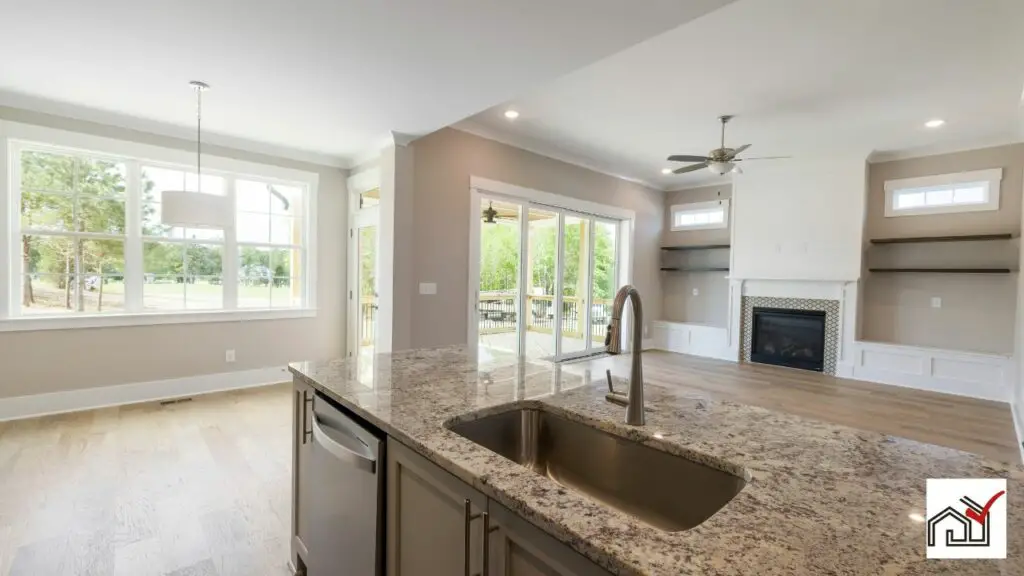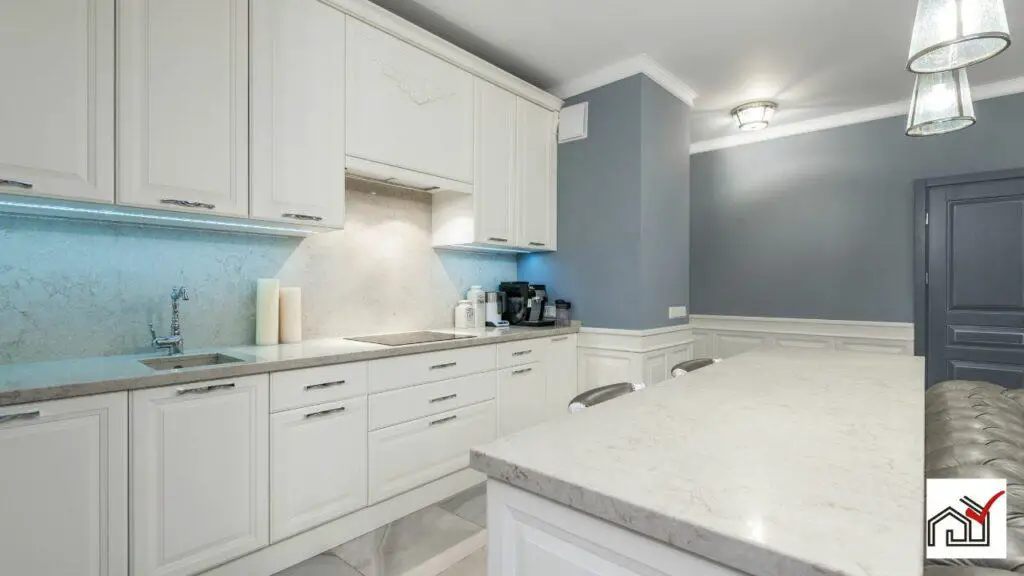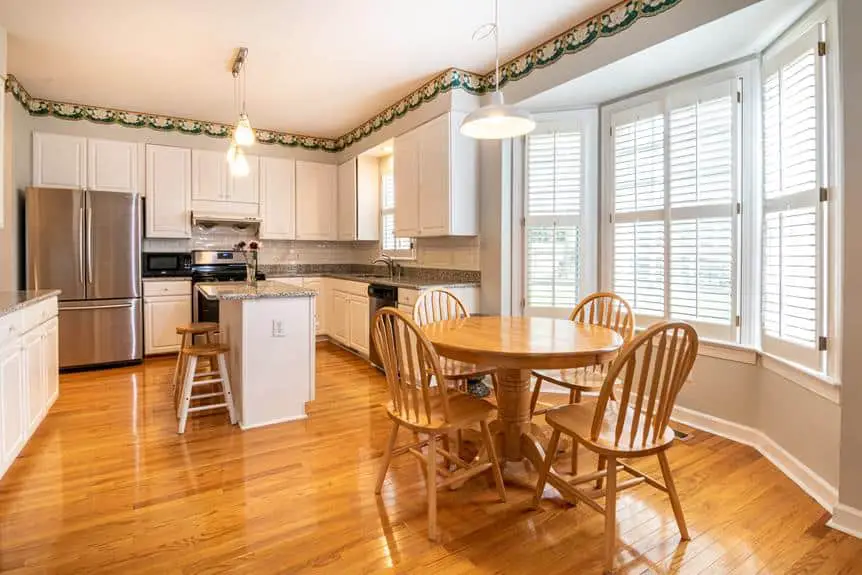Are you torn between porcelain and granite countertops? You are not alone.
Choosing a countertop isn’t an easy decision.
You don’t want to spend thousands on something that you might regret later.
So, here are 8 differences between porcelain and granite countertops for you to make an informed decision.
1. Manufacturing Process
When it comes to the manufacturing process, there is a stark difference between granite and porcelain countertops.
Granite is formed naturally from volcanic activity.
So to create granite countertops, granite is taken straight from the quarries by blasting or chiseling it out of the earth.
It’s then cut down into slabs that are later sealed and installed as countertops.
On the other hand, porcelain countertops are man-made. Porcelain doesn’t exist in nature as granite.
Rather, porcelain countertops are manufactured through a complex process called sintering that involves extreme heat and pressure.
2. Heat Resistance
As a natural rock, granite is highly resistant to heat.
Since it gets created through volcanic activity, it can tolerate high temperatures without getting damaged.
Although granite itself is resistant to heat, the sealing applied on granite countertops might not be.
The surface sealing of granite countertops can get damaged by high levels of heat.
So granite countertops aren’t heat-proof; they are just heat-resistant.
Placing a scorching pot or pan directly on a granite countertop can damage the countertop’s surface due to the sudden shift in temperature.
That’s why it’s important to use hot pads and trivets while placing anything hot on countertops made from granite.
On the other hand, porcelain is almost heat-proof because it goes through extreme heat as part of its manufacturing process.
Even if porcelain countertops don’t get damaged at high temperatures, it’s always recommended to use hot pads and trivets while placing hot vessels on them.
Actually, using hot pads and trivets is recommended for countertops made of any material.
3. UV Resistance
When it comes to UV resistance, porcelain is the clear winner.
Porcelain is formulated to be weather resistant and not fade in the sun.
On the other hand, granite has some minerals in it that aren’t UV resistant and could cause fading over time if exposed to harsh sunlight.
This means that porcelain countertops are a great choice for outdoor installations, where you need a surface that won’t fade under the sun.
Granite countertops can also be used outdoors but shouldn’t be relied upon if there will be prolonged exposure to direct sunlight since granite isn’t UV resistant.
However, both materials are extremely durable and will resist chips, cracks, scratches, and heat with equal success.
Further Reading: 5 Reasons Why Porcelain Countertops Are Durable
4. Stain Resistance
When it comes to stain resistance, porcelain comes out on top.
Porcelain is non-porous, so liquids are unable to penetrate it.
This means that any liquids that come in contact with porcelain countertops can easily be wiped away.
In contrast, natural stones such as granite have pores which make it more difficult to remove the stains once the liquids get absorbed.
Granite countertops must be regularly sealed to slow down the absorption rate of liquids.
That said, oil-based and water-based liquids will remain on the surface of granite countertops if they are sealed correctly and maintained properly.
Even if a stain occurs on a granite countertop, you can use a specialized cleaner that is designed to draw the stains out of its pores.
On the other hand, porcelain countertops are non-porous. So all liquids stay on the surface itself.
This makes it much easier and quicker to clean up porcelain countertops.
There is also no need to seal porcelain countertops because they are fired with a glaze that serves as an impenetrable layer.
So, if you are looking for a countertop that is resistant to staining, then porcelain countertops are your best bet.
5. Edge Options

When it comes to designing the look of your countertop, edge profiles are extremely important to consider.
Unfortunately, you don’t have too many options in this department with porcelain countertops.
This is because porcelain countertops are much thinner than granite countertops, making it impossible to create fancy edges.
Granite countertops are much thicker and can be profiled using various techniques to create decorative edges.
This gives homeowners more options when it comes to their countertop design.
In the future, manufacturing technologies may improve to allow more edge options for porcelain countertops.
But right now, granite countertops are the only choice if you want those extra edge options.
Related: 15 Popular Granite Countertop Edges
6. Colors
When it comes to decor, color plays a major role in creating the atmosphere.
Therefore, it makes sense to carefully consider the available color options before selecting a countertop.
Both porcelain and granite come in a range of colors and styles, so you are sure to find something that will fit your design needs.
Porcelain is a man-made material that offers a large selection of colors and patterns due to its manufacturing process.
The process involves imprinting colors and design patterns onto the porcelain countertop’s surface.
On the other hand, granite countertops are limited to the colors of natural stone.
While natural stones don’t offer as many varieties as porcelain, there are some unique colors that they have to offer.
However, you should expect color and shade variations since stone is a natural material.
Either way, both countertops offer something unique in terms of colors. So what really matters here are your preferences.
7. Maintenance
When it comes to maintenance, granite requires a bit more effort.
Granite countertops must be sealed periodically, usually 1 to 2 times per year, and cleaned daily with non-abrasive sponges and detergents.
If spills are left on a granite countertop for too long, they can easily stain the surface. So some vigilance is required here.
However, porcelain countertops are much easier when it comes to maintenance.
Since they come pre-sealed, you don’t need to worry about reapplying sealant or anything like that.
Porcelain is also non-porous. So there is no risk of staining, and cleaning it is super simple with soap and water.
If you aren’t the one for meticulous upkeep, then porcelain countertops are likely a better choice for you.
8. Popularity
Granite has long been a favorite choice for kitchen countertops because of its well-known benefits, such as durability and style.
Over time it has become one of the most popular materials for this purpose.
However, porcelain countertops have become increasingly popular recently as an alternative to granite due to their versatility.
The popularity of porcelain countertops has grown so much that we can expect an even bigger surge in their use over the coming years.
Further Redaing: Porcelain Countertop Costs (Explained for First-Timers)
Which Countertop Should You Pick? Porcelain or Granite?
When choosing between porcelain and granite countertops, there is no one-size-fits-all answer.
Both materials offer unique benefits and drawbacks that must be weighed carefully before making a decision.
If you are looking for a durable countertop that requires minimal maintenance, then porcelain is likely the best choice for you.
Porcelain is non-porous and comes pre-sealed, so you don’t have to worry about staining or reapplying sealant.
However, if you are looking for a unique countertop with natural colors and patterns, then granite is likely the better choice.
Granite offers a wide range of colors and styles that can easily be customized to fit your design needs.
Ultimately, the decision is up to you and should be based on your own personal preferences.




